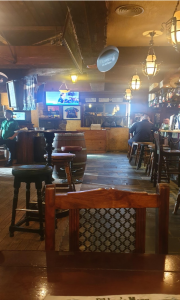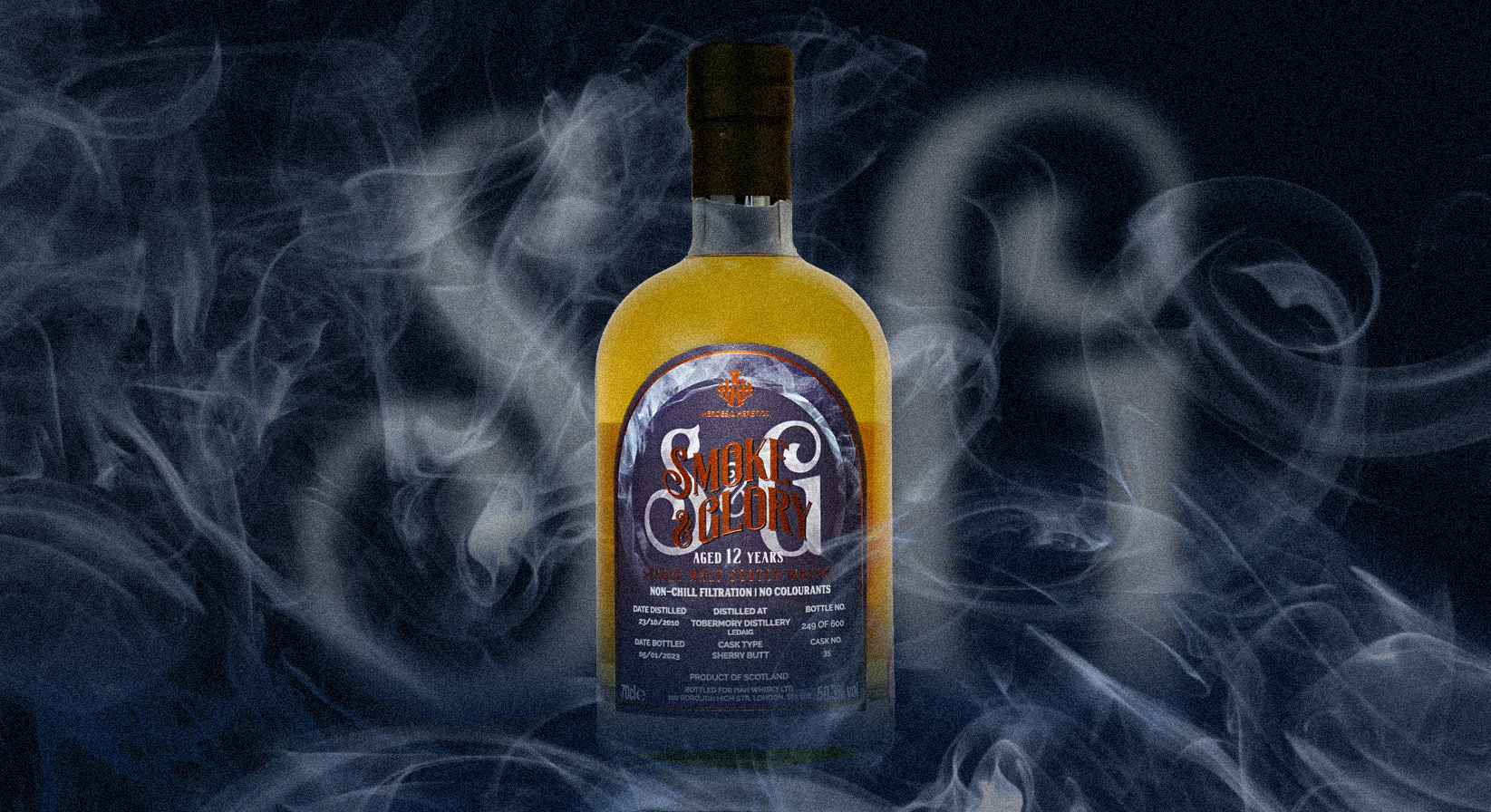There is a problem with drinking different whiskies (whiskeys) from around the world. I tend to get carried away and start to acquire the characteristics and accents of the spirit’s origin. My best example (in the line of being professional) is my recent tasting and asking better questions about Irish Whiskey. I rediscovered my Irish roots and was acting beyond the pale* and apologies to those at Fibber Magee’s in Dubai last week.

I was told by the locals (local to both Dublin and Dubai) that whiskey was invented in Ireland. A quick check revealed that it predates Scotch by over seven hundred years. It is not entirely clear when the first whiskey was made, but most historians agree it was the work of Irish monks sometime around 500 AD. Those monks have a lot to answer for my headache next morning.
The very word ‘whiskey’ comes from the Anglicization of uisce beatha. This phrase means water of life that comes from Goidelic – an old Irish, Scottish Gaelic, and Manx branch of languages.
My notes from that evening are a little messy. Having checked the facts carefully, it is worth noting that:
- Irish whiskey is always spelt with an ‘e’ in the word ‘whiskey’; scotch only uses the spelling ‘whisky’.
- Irish whiskey can only be made in Ireland and the rules to produce Irish whiskey date back to 1880.
- By Irish law, all whiskeys must be aged a minimum of three years and only in barrels.
Another thing you should know from my hard work is that Irish whiskey tastes very different than Scotch whiskey, which is a point of Irish pride. Whiskey is a distilled alcoholic beverage made from fermented grain mash, usually aged in wooden casks, giving it a gorgeous brown colour and distinctive taste. To be considered a bourbon, the whiskey’s mixture of grains should be 51% corn, rye, wheat, malted rye, or malted barley grain. It must also be stored in charred oak containers that don’t contain additives, which gives it its signature smokiness.
It was first used as a medicine, administered to those who had eaten bad food. They would also use it to clean wounds. Drinking too much and entering an altered state was considered holy. I was definitely very holy at Fibbers.
The best way to start your tasting experience is to lift the glass and inhale the aroma with your mouth open to see what flavours you may notice. You can smell what it is going to taste like.
Irish whiskeys are often thought to be smooth, fruity, and triple distilled and many of them are, but this isn’t the full story. The Irish are widely credited as being the first to distil whiskey, though this is strictly contested by the Scots. The Bushmills distillery, for example, is the world’s oldest licensed distillery, founded in 1608. The Irish are unique in their pure pot still whiskey.
Irish single pot still whiskey is a mix of barley, malted and otherwise, distilled in a pot still. The unmalted barley gives a spicy freshness that one associates with Irish whiskey. Some of the Irish blends are global successes with Bushmills Original and Jameson both being notable examples. There’s also a healthy selection of single malt expressions, including most of the Bushmills range, Tyrconnell and Connemara.
What I tasted were the distinctive flavours of Irish whiskey, which begins at their source. The rich soil and soft climate of Ireland provide the ideal place to grow barley. To obtain malted barley, the barley then germinates and sprouts. It is then dried, creating an organic material that is more fermentable than a mature barley plant. At the malting stage, Irish malt is dried in a closed kiln, whereas Scotch malted barley is dried in an open kiln and exposed to peat smoke. If 100% of malted barley is used in a whiskey, it’s called a Malt Whiskey. If it’s a blend, it’s a Blended Whiskey.
Key types of Irish Whiskey:
- Single Malt Irish Whiskey: Made from 100 per cent malted barley, this type is produced by a single distillery in a pot still.
- Blended Irish Whiskey: Blends account for 90 per cent of all Irish whiskey production. I tried Jameson Blender’s Dog from County Cork. This was very nice. I smelled light citrus notes and the taste was a bit sweeter.
- Single Pot Still Irish Whiskey: A blend of both malted and unmalted barley distilled in a pot still and is unique to Ireland.
- Single Grain Irish Whiskey: Only a single grain is used in the distillate. I tried Kilbeggan which was named for the famed distillery that dating back to the mid-1700s. It is double distilled much the same way it is done in Scotland some argue, rather than triple.
- Poitín: I just sniffed a glass of Pointín at Fibbers and this was strong stuff – Moonshine! This product stands little to no time ageing in a barrel and I would guess neither does the imbiber.
Irish whiskey was once the most popular spirit in the world. The boom was followed by a bust – and near extinction – but today the good times are back, with distilleries popping up all over the country.
When English whiskey writer Alfred Barnard toured Ireland’s distilleries 130 years ago, he found 28 in operation. Fast forward 100 years since his visit, and only two remained – Bushmills in Northern Ireland, and Midleton, near Cork in the south. Both were owned by the one company still making whiskey in Ireland: Irish Distillers Ltd.
For hundreds of years’ Irish whiskey was one of the world’s most popular drinks, and was much beloved by famous figures such as Queen Elizabeth I, who shared hers with Sir Walter Raleigh. Tsar Peter the Great of Russia loved it, declaring it his favourite. By the late 19th century, 160 whiskey distilleries were operating in Ireland.
Unfortunately, history dealt several tough cards to Ireland’s hand, and Irish whiskey went into decline. While Irish people have remained loyal to their heritage drink, the rest of the world looked to Scotch and Bourbon and other regional whiskeys to fill the void, leaving us with only seven distilleries pumping out all the world’s current Irish whiskey supply.
In 1661, the Crown introduced a tax on whiskey production in Britain and Ireland. Therefore, in theory, all whiskey distillers in Ireland were to register and pay taxes. Although Crown control now extended far beyond the Pale*, there is a limited official record of whiskey distillation during this period. One reason for this is that until 1761 registration was done on a voluntary basis. Therefore, as registration entailed paying a tax, it was much avoided for obvious reasons.
The late 1980s saw the beginnings of a long and slow resurgence in the Irish whiskey industry, with the establishment of the Cooley Distillery in 1987, and Pernod Ricard’s takeover of Irish Distillers in 1988, which led to increased marketing of Irish whiskeys, in particular Jameson, overseas.
By June 2019, this figure had grown to twenty-five, with several more in the planning stages. As of 2018, sales of Irish whiskey stood at 10.7 million 9-litres cases, up from 4.4 million cases in 2008, with sales projected to exceed 12 million cases (a historical peak) by 2020, and 24 million by 2030.
Sláinte.
* The Pale (An Pháil in Irish) or the English Pale, was the part of Ireland directly under the control of the English government in the Late Middle Ages. It had been reduced by the late 15th century to an area along the east coast stretching from Dalkey, south of Dublin, to the garrison town of Dundalk. Being outside the pale means being unruly and behaving badly.



You must be logged in to post a comment.